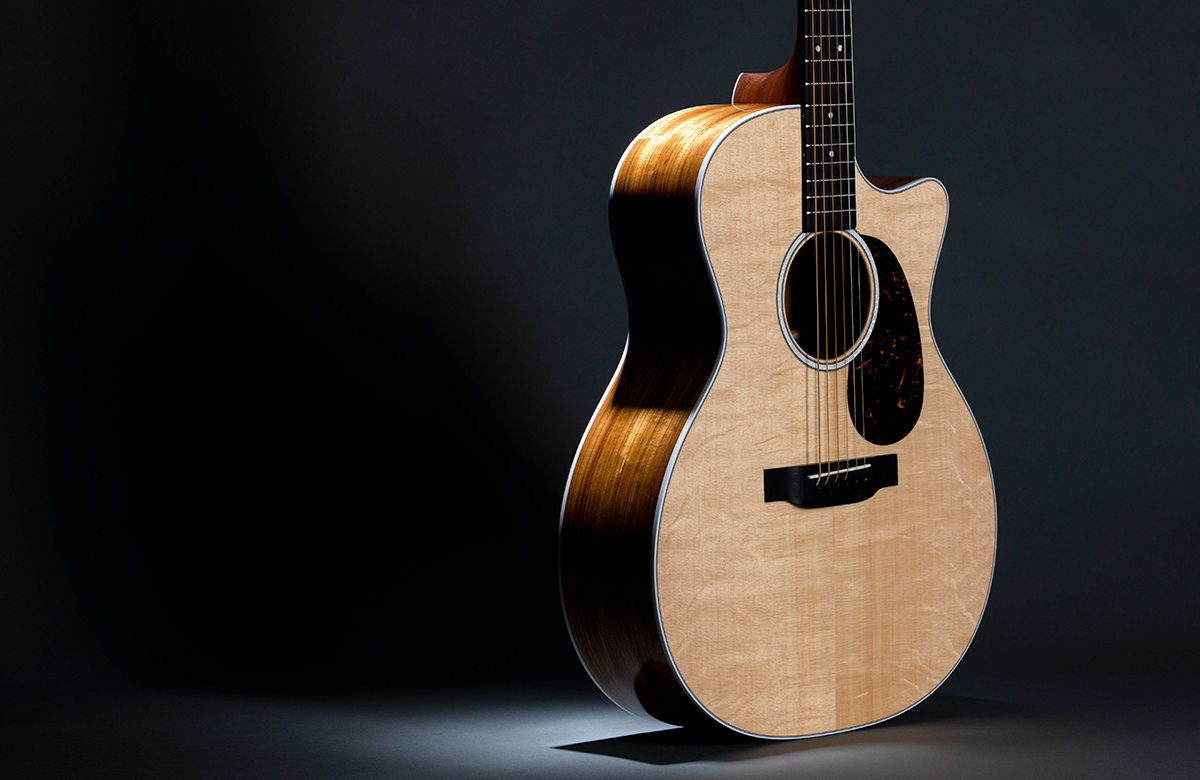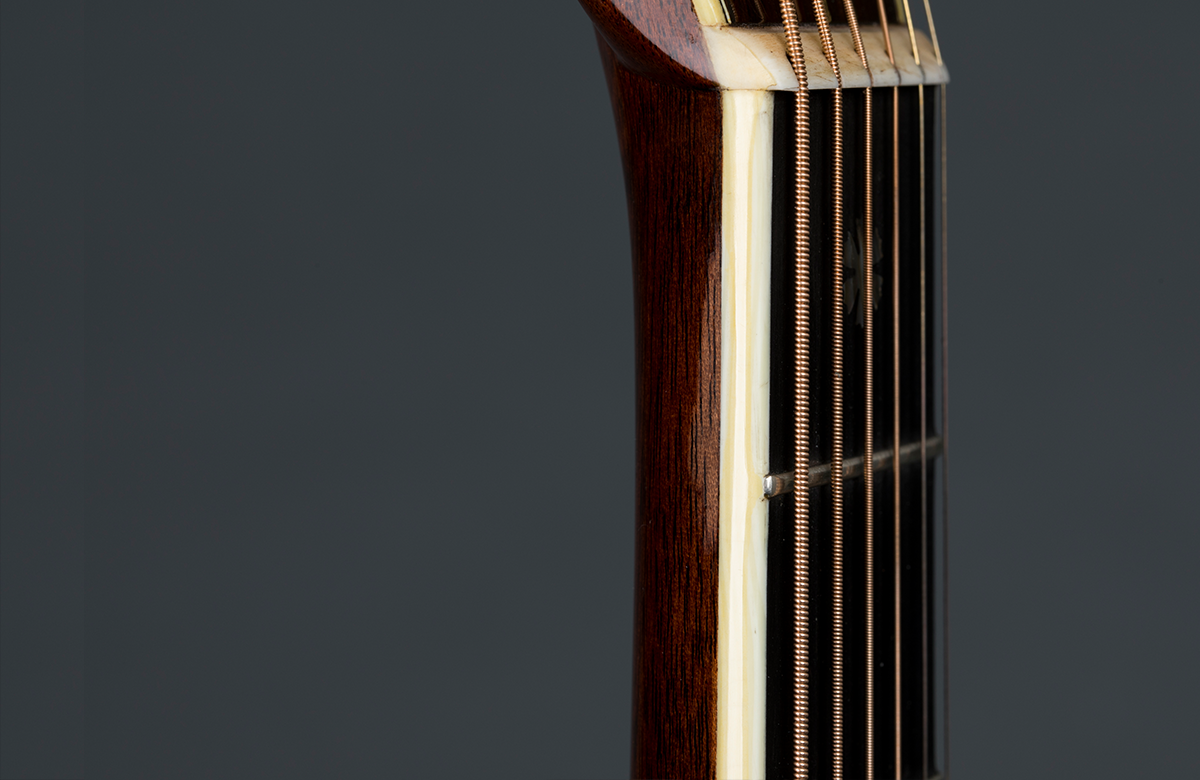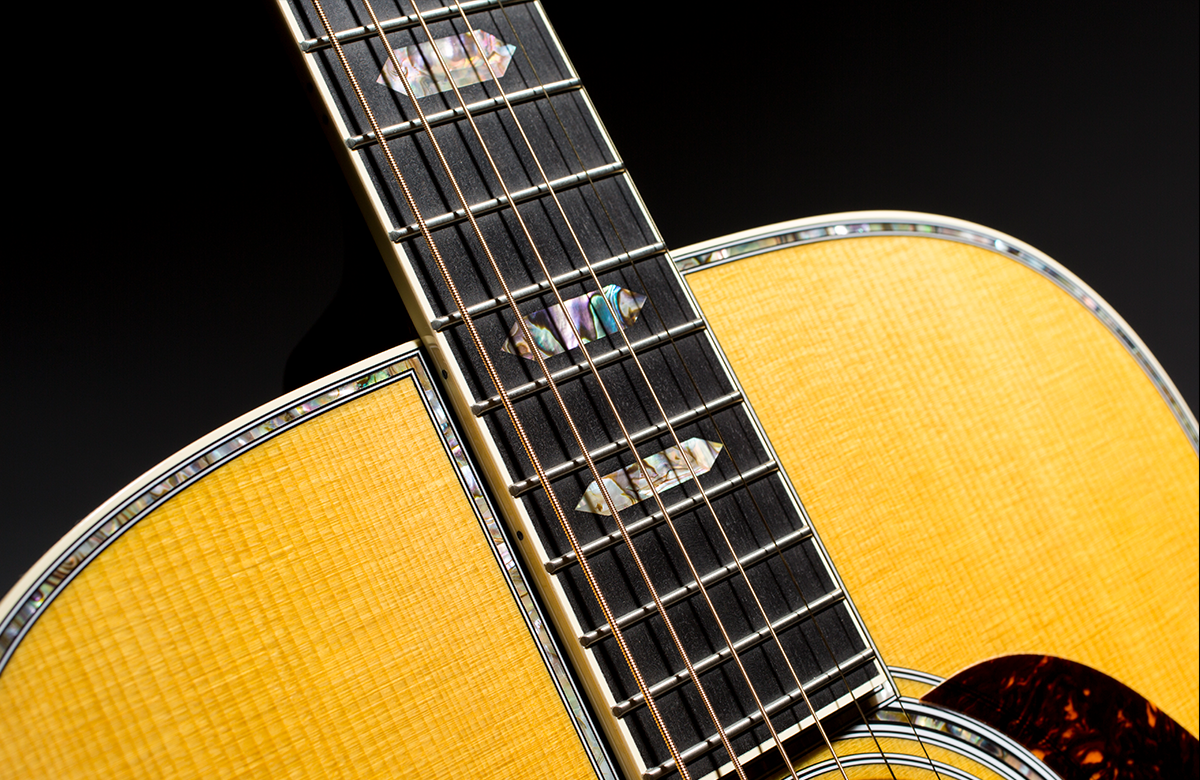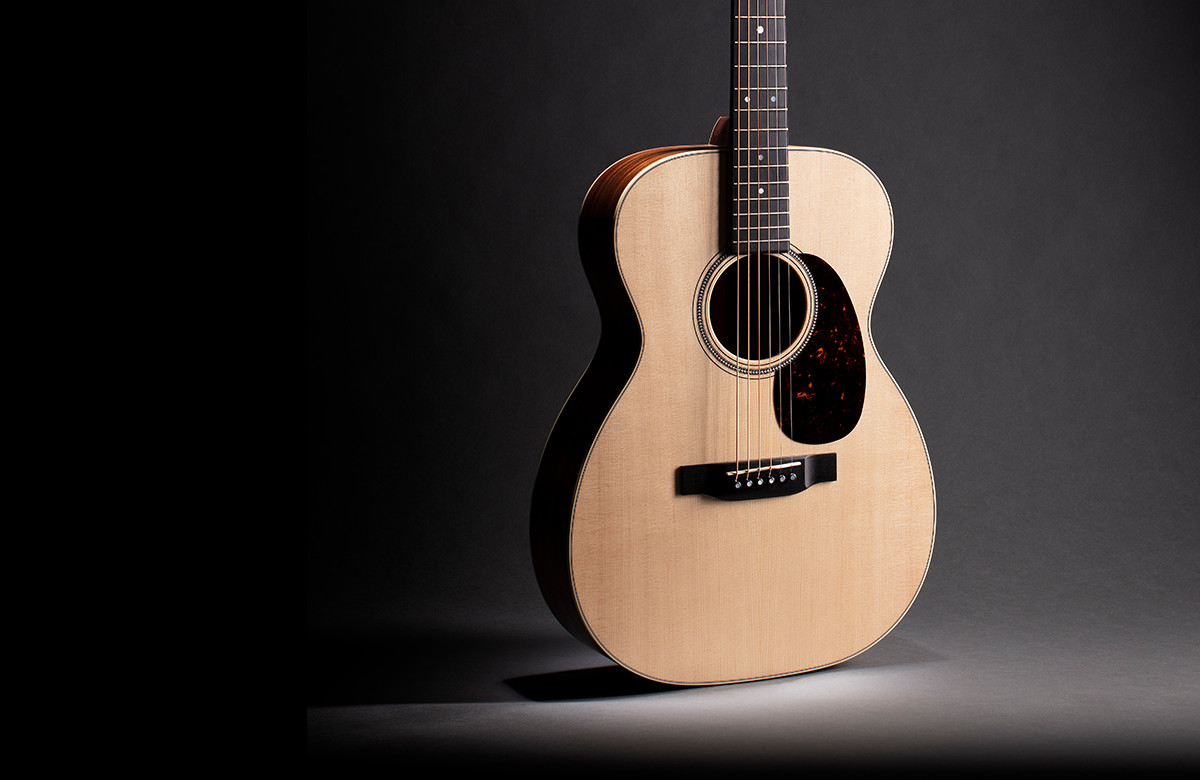How to Order the Custom Martin of Your Dreams
We at Maury’s Music are proud to have helped so many guitarists realize their dream of have having a stellar musical instrument made exclusively for them in the world-renown Custom Shop at C. F. Martin & Co.
And with Maury counting some of his favorite friends among the master craftsman and craftswomen and instrument designers who create such custom guitars, we are in a unique position to offer sage advice with insider know-how that will demystify the process while making it easy to understand. And we will be happy to assist you with personalized advice on how you should proceed with having your very own custom Martin guitar go from cherished dream to righteous reality.
Our goal in this new series of blog posts is to separate fact from fantasy. We will see to it that what sounds amazing in your mind turns out to sound amazing to your ears, while making sure your one-of-a-kind custom Martin is a musical instrument that you will love to play happily ever after, at the best price possible.
Where to Begin?
We begin with the concept of the “starter model.”
Whatever custom order is submitted to the Martin Custom Shop, it begins with a pre-existing Martin model, which is then customized. This can be one of the current models, like the D-45, OM-28, DSS-15M Streetmaster, or GPC-13E. Or it can be a model that is no longer in production, like the OMC-18E, 000-28H, etc.

The Martin GPC-13E is just one of many models you can use as a starting point.
Sometimes it is as simple as wanting a venerable Martin model with a different shape to the neck, or with a different tonewood used for the top, or the back and sides. Or perhaps with the addition of customized inlays on the fretboard or headstock face plate.
Other custom Martins have so many changes it might be impossible to guess its starter model. But it definitely had one. But the possible customizations are virtually limitless. The key is picking the starter model that is as close to your goal as possible, e.g. that already has many features you desire. That way you are making the fewest customizations as need be, guaranteeing the lowest final price.
That being said, there are areas for consideration where you want to be certain you get what will make you happiest. And that usually concerns three elements of maximum importance when it comes to achieving that goal: the instrument’s size, its styling, and its neck.
The Neck
While every aspect of a custom Martin order requires the customer to put in some clear-headed thinking and do some research, nowhere does this matter most than choosing the right neck. If you already know you will be happy with the neck that comes on your starter model, then you may consider yourself lucky, and move on to the other key elements.
The major specifications to consider when customizing a neck are the neck profile, which refers to the shaping of the hardwood neck itself; the fingerboard taper, which determines the width of the neck at the nut and how much it widens as the frets march toward the body of the guitar; and the string spacing that is partly determined by the specific fingerboard taper. It is the combination of these specs that add up to what is often just called “the neck.”

Find the neck shape and profile that fits you best.
No matter how wonderful a guitar sounds, if it is not comfortable to play during long sessions, you just won’t be able to enjoy it as much or as often. While some guitarists are happy to play various necks with different shapes and sizes, most of us prefer certain specifications.
Fortunately, the Custom Shop is happy to offer just about every neck shape available on their current and recently retired catalog of acoustic guitars. Most modern Martins come with their High Performance Neck, which combines the Modified Low Oval Profile with their High Performance Taper, which has a nut width of 1-3/4” and a 12th fret width of 2-1/8”. It has become the acoustic guitar industry standard.
But whether you like the Modified V profile on the Eric Clapton model or the Low Profile on the John Mayer model, from the Full Thickness profile from the 1960s to the Modified Low Oval used on most Martins today, deciding on the correct profile for your hands and matching it to the best fingerboard taper to suite your needs is an important step on the way to the perfect Martin for you.
The fingerboard taper comes in two varieties, the High Performance Taper, used on most modern Martins, and the Standard Taper used on vintage replica Martins, and a few legacy models. Where this matters most is on the Standard Taper instruments made with a 1-3/4” width at nut, like vintage style OMs and various 12-fret Martins made in recent decades. The 12th fret width of the fingerboard on these guitars is 2-1/4” and the string spacing can be 2-1/4”, 2-5/16”, or 2-3/8”.
By comparison, the High Performance taper also has a 1-3/4” width at the nut, but has a sleeker feel as the hand moves up the neck into the higher frets.
The Standard Taper with a 1-11/16” width at nut is also an option. It is currently found on the OMJM John Mayer model and some instruments in among the 15 Series. It too has a 12th fret width of 2-1/8” and corresponding 2-1/8” string spacing that is 1/32” narrower than used with the High Performance Taper.
And then there are vintage-style Martins that have wider nut widths, like 1-13/16” and 1-7/8, even the 2” width on their retired Classical guitar designs. So, players with large hands and long fingers who want those big vintage necks, well, they may indeed go for it. In fact, the neck shapes from many of the Authentic Series instruments are available for custom orders!
The overall feel of a neck is a combination of the profile, the fingerboard taper, and the string spacing. The size and strength of your hands and the kind of music you enjoy playing will help determine which combination of neck specifications is right for you. While most guitarists will be happy with Martin’s modern High Performance Neck, with its High Performance Taper and Modified Low Oval Profile, the Custom Shop will be happy to make a neck that is just right for you.
The Style
The official style of a Martin guitar is not just about its cosmetic decoration and the color of its bindings, but also what tonewoods are featured, and what kind of neck joint is being utilized. The demarcation between the traditional hand-fitted dovetail neck joint with its solid mahogany neck block begins with the Standard Series.
All official Martin model style numbers from 18 upward have the traditional dovetail. All Martins made in Styles 17, 16, and 15 have the modern Simple Dovetail neck joint. And even simpler Mortise and Tenon neck joint still used on instruments in the Road Series and X Series. Various special editions and limited editions can have any of these neck joints, so be sure and look for that when browsing such models as a possible starter model for your custom order. And any of these more affordable Martin guitars can be used as a starter model, and ordered with the traditional dovetail neck joint.

Dress up your custom in any style you like. (Style 45 shown here on the legendary D-45).
And while the specific Martin style includes cosmetic styling like fretboard marks and binding, it also includes the tonewoods. And they are very important indeed when it comes to what your guitar will sound like.
It is said that most of the tone of a guitar comes from its soundboard. And most guitar soundboards are made from some kind of spruce. But there are other top woods available, like Western Red Cedar, and hardwoods from the mahogany family, the walnut family, and even koa from the Hawaiian Islands.
Most modern Martins are made with a Sitka spruce soundboard, like those in the Standard Series of professional level guitars, which include Martin’s most iconic models. It imparts warm, strong tone with a wide dynamic range, good for all sorts of musical styles.
But other options are available from the custom shop, including Adirondack Red spruce found on Martins made before 1946 and on today’s Authentic Series. It provides deep bass response and bell-like trebles, yet with a drier overall tone that offers great definition and harmonic clarity. There is also Engelmann spruce from the Rocky Mountains, and more than one variety of European spruce, each with its own tonal warmth and harmonic complexity that increases as the spruce ages.
In addition to the species of spruce, there is also the option of Martin’s Vintage Tone System, their propriety method of wood torrefaction, which “ages” the wood so a brand new top has the properties of spruce that has been seasoned for decades, so that it sounds “played-in” on Day One. It really has to be heard to fully appreciate the wonderful tonal enhancements the VTS spruce offers.
The back and sides of a Martin guitar are also made out of beautiful tonewoods, hardwood that is from exotic locations or from right here in the USA. While the look and even the smell of such woods can be a delight, they also contribute greatly to the coloring and complexity of the guitar’s tone.
The various species of mahogany and rosewood are most popular, followed by koa, walnut, and maple, each with a lot to offer. But there are a large number of beautiful looking and sounding woods available from the Custom Shop that are not often seen on regular Martin models. We will be featuring a detailed expose on these common and uncommon tonewoods in a separate blogpost in the coming weeks. Many of them are also appreciated because they are environmentally friendly, including some that are certified by the Forest Stewardship Council.
The Size
The size of a Martin guitar is a combination of its shape, which determines the area of the soundboard, and the depth of the sides. And in combination, they determine the overall cubic volume of the interior sound chamber. For example the Jumbo and the Grand Auditorium (aka the M or the 0000) have the same size soundboard and back. But the M has a shallower depth, which makes it easier to reach around, while decreasing the size of the sound chamber. And that decreases the bass response compared to a Jumbo, so there is more balance across the six strings, and the midrange steps forward with a notable punchy tonality.
The largest sizes like the Dreadnought, the Slope Shoulder Dreadnought, and the Jumbo offer the greatest bass response and volume. The Grand Performance and M have a little less volume and bass response in a less-bulky size, and with a pronounced mids.


The 00-14 fret size is featured on the 00-16E Granadillo
The Auditorium size, which includes Orchestra Models and 000 models, have perhaps the most truly balanced tone across the six strings. The OMs have a long-scale neck, meaning the length of the playable string and the spacing of the frets is the same as the D, J, GP, and M models. The 000 has the same body size, but its short-scale neck is the same as the smaller 00 Grand Concert and 0 Concert sizes. And in between the Auditorium size and the Grand Concert size is the Slope Shoulder Grand Concert size, officially called the 00L.
One advantage to the short-scale 000s is how the strings are easier to bend, when playing lead guitar. One advantage to the OM is the extra string tension from the long-scale neck on the same size soundboard, which means more energy is injected into the top, so OMs tend to be louder, with greater projection, while also translating harder strumming into a more robust voice.
The 00 Grand Concert size and the 0 Concert size are very comfortable to play, which makes them good for smaller guitarists, or those who simply want an instrument that is downsized from the more popular Dreadnoughts and OMs, while offering classic Martin tone. The 00L has a slightly larger sound chamber than the 00, giving it greater bass response.
And then there are the traditional 12-fret designs of the D, 000, 00, and 0 sizes, respectively, which have longer bodies than the 14-fret versions, with a throatier sound, at the expense of losing two frets free from the body.
There are many sizes to choose from. And your reasons for picking one may vary. If you can’t live without that mighty Dreadnought bass and power, then order yourself another dread! If you want something that won’t stress out the shoulder on your strumming arm, the OM may be the way to go, or the GPC if you want something that sounds a bit bigger than an OM without the D or J bulk.
If you are all about the Blues, but still want a good bass thump to go along with those full-step bends, the 00L may be exactly what the doctor ordered. And if you already have a large guitar and you want it to have a charming, little sibling for composing tunes on the sofa or back porch, or to take to the lake house, the 00 or 0 could be perfect!
All these elements, the neck, the size, and the style that is a launching point for how your custom guitar will look and what woods it is made from, are vitally important in building the Martin that will bring you happiness ever after. We are here to answer your questions and give you our opinion, and if possible consult with our friends, the experts at Martin guitar, to make your dream come true.
We will follow-up this blog post with more information about the many options available to you as you design your own custom Martin guitar. These future posts will include elements like bracing, finish, even the kind of glue used for the joinery, and of course the vast array of world-class tonewoods that await you in Martin’s world-famous acclimation room. So, stay tuned and dream on!